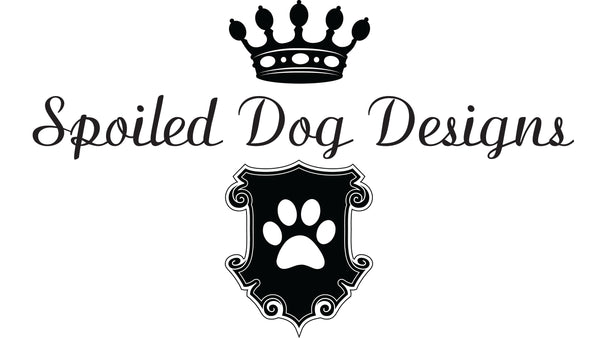Harness that Energy!


We all think our dog or cat is the best in the world and rightfully so. But some dogs don’t have the world’s best walking skills. A dog may pull, zig zag, get distracted, walk too slow or too fast, lung excitedly at people, bunnies or other dogs, or be an escape artist that slips their collar or harness and runs away. And these days, more cats than ever are walked on leashes, and some of them display this same behavior.
WHO NEEDS A HARNESS?
Here are just a few prime candidates for leash training with a harness.
PUPPIES / KITTENS - Puppies/Kittens are delightful and give you lots of laughs when you have to train them to a leash. But they are still uncoordinated, and their bodies are soft and delicate. Walking them on a harness gives you good control without putting too much pressure on any one part of their bodies.
PETS WHO PULL - When a pet pulls on a leash and is allowed to move forward, they’re learning that pulling is the way to get where you want to go. Some breeds are natural pullers, especially some working dogs so they will naturally try to pull any person or thing.
In contrast to pulling against a collar around their neck, a harness spreads the pressure around the pet’s body, and they feel that pressure when you hold them back. And you’ll be more likely to pull back if you know you’re not putting undue pressure on your pet’s throat.
ESCAPE ARTISTS - I hear stories all the time about a dog or cat slipping out of its collar or harness—a scary situation if your pet gets loose and runs away. This usually happens when the collar or harness does not fit well and is too loose around the neck or body.
BREEDS PRONE TO NECK INJURIES - Small dogs like Chihuahuas, Yorkies and other tiny breeds are especially prone to neck injuries and trachea collapse. And if you feel your cat’s neck, you can tell how delicate the bones are and how tiny the trachea is. Imagine how one sharp pull can injure them. And how the repeated pressure of walking on a collar can cause gradual deterioration. For tiny breeds, the cartilage that makes up the trachea can be weakened or malformed from birth. A harness takes that pressure off the neck and disperses it around the body.
PETS WHO NEED PROTECTION - Last year, I sold a harness to a customer who had previously walked his small dog on a collar. He came back the following week to tell me that the harness had saved the dog’s life. On an evening walk, he was confronted by a coyote and turned to see a pack of them behind him. He quickly pulled up on the leash, gathered his dog, and escaped the danger. He couldn’t have done that if his dog had been wearing a collar.
TYPES OF HARNESSES
It seems there are as many styles of harnesses as there are breeds of dogs and cats, so let’s review just a few of my favorites that will accommodate the pets just discussed.

Vest Harness – Also called Velcro Wrap Harness, have hook and loop closures, so they’re adjustable without plastic clasps. They’re easy to put on—you simply lay it on your pet’s back and wrap it around the chest and belly. Check that the harness goes around the chest/shoulders, not the neck, and that it has adequate overlap of the Velcro to be strong and safe.
If only half or less of the Velcro overlaps, you need a larger size. With lots of fabrics available, from light meshes to heavier winter fabrics, you’ll be able to find one that fits your dog’s needs. Vest harnesses are great for tiny and medium-sized dogs and cats, as well as large dogs who don’t pull.
If your pet is between sizes or wears different sizes at the neck and belly, you can have a vest harness custom made from a company like Spoiled Dog Designs. For cat owners, a custom harness will ensure
a perfect fit—most harnesses are made for dogs, and a cat’s body is shaped differently, so they rarely fit well. And a good fit
is critical to keeping your escape artist in check!
Step-In Harness — with this harness style, your pet’s legs slip into the loops of the harness, which then wraps around the body with plastic clasp closures. Step-in harnesses are great for pets who pull, because it places all the pressure on the dog’s chest, giving you much more control. If your dog is older and needs support getting up stairs or curbs, you can easily pull on the leash and give the dog extra lift with this style harness. Also, if your pet hates the sound of Velcro, the use of the plastic clasps are a good choice.

Plush makes a cool design in air mesh with reflective piping, great for keeping your pet comfortable and making him more visible. Some manufacturers, including EzyDog, make a harness with an EVA foam chest plate that conforms to your pet’s chest for comfort and better control. With adjustable straps at the shoulders and belly, this harness creates a secure, custom fit to keep the harness firmly in place. This is good choice for large/giant dogs who pull.

Strap Harnesses are some of the most adjustable, making them ideal for growing puppies or kittens (just check to make sure all the straps, not just some, are adjustable). You can create a perfect fit (for those escape artists) and the harness can grow with your pet. The straps work well for pets with full coats, because the straps sink into the coat instead of wrapping around it. If you have a fluffy pet, you know that its coat will often get matted under a layer of fabric. However, pets with very short fur might experience some rubbing from the straps, so take that into consideration if you choose this style.
FINDING THE RIGHT FIT
A proper fit is key to making the most of your harness and keeping your dog safe. Start your search by bringing your pet with you to try on different styles and sizes. The general rule is that collars, harnesses, or clothing are adjusted properly if you can put two fingers between your pet’s body and the garment. More space is too loose for a pet that escapes. Less is too snug.
But what if your pet isn’t comfortable in stores? Not to worry—you can still get a good fit.
One way is to bring one of their harnesses that fits well so you can compare measurements. If that’s not an option, you’ll need to measure your pet and take those measurements with you to the store. You’ll need to measure your pet in three places.
- Around the lower neck at the shoulders
- Around belly a couple of inches behind the front legs
- Length from the base of the neck to the base of the tail
With these measurements, you should be able to find a harness that will fit. And if you don’t, you can use them to have your harness custom made. At Spoiled Dog Designs we make our harnesses one at a time so we are happy to use Custom Sizing to make a harness for you that will fit your pet.
If you decide using a harness is a better choice than walking your pet on a collar, you’ll find plenty of choices to find one that’s comfortable and safe for your pet.
You'll find our complete selection of harnesses here.
This article first appeared in Pet Companion Magazine.


